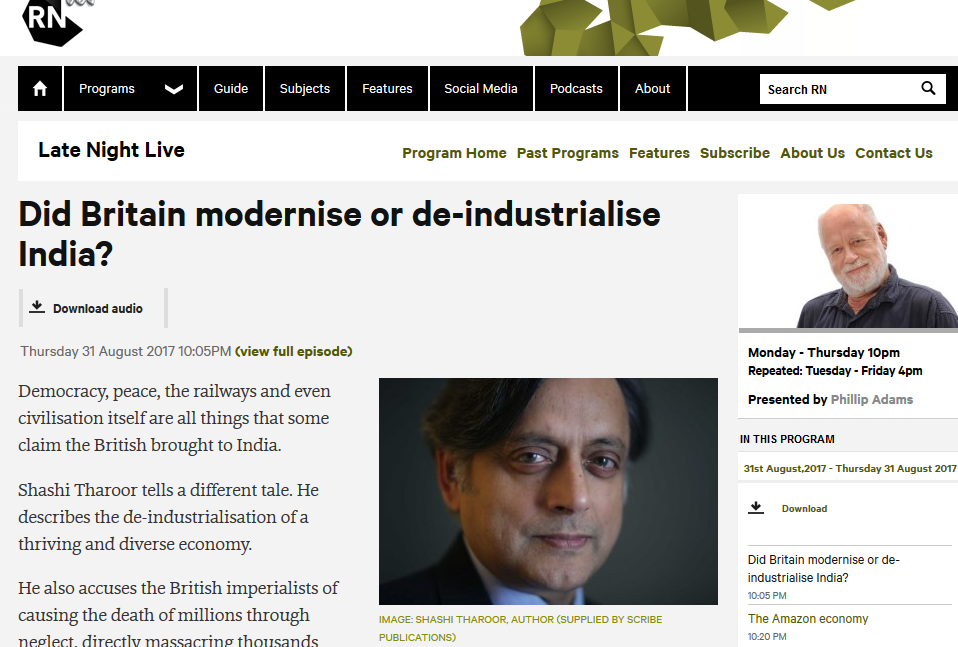Oh my god. The lies we were taught in school. I have just finished listening to an interview with (v.i.p.) Shashi Tharoor about his book on the British rule of India: Inglorious Empire: What the British Did To India.
- Before the British arrived India represented over 20% of the world’s GDP (textiles, steel, shipbuilding…) and had done so for centuries. By the time the British left it was reduced to 3% of world’s GDP.
- There is an eyewitness account the British smashing Indian looms and breaking or cutting off the weavers’ thumbs so they could not rebuild the looms and resume production.
- The Indian export textile industry was effectively destroyed as Indians were forced to sell cotton to Britain and then buy back inferior British textiles.
- The railways did little to benefit Indians until after the British left.
An interesting datum given today’s situation…
- The British were the ones responsible for introducing the Hindu-Muslim antagonistic divide. The Hindus and Muslims were united, serving under common native command, to oppose the British. The British responded by initiating policies that over time succeeded in their aim of building hostility between the two faiths — the old “divide and conquer” tactic.
And we are reminded again of the genocidal policies that I first read about in Mike Davis’s Late Victorian Holocausts. This time, however, it was Winston Churchill himself who emerged as the Stalinesque monster, diverting grain from regions where millions were dying in order to build up reserves for remotely hypothetical threats in Europe. Churchill is on record as saying the deaths are the Bengalis own fault for “breeding like rabbits”.
And on and on it goes…..
And we were taught how different the British empire was from any other previous empire. The British empire was a civilizing boon to the world, spreading law and civilization and lifting the standards of living of its subjects.
The only redeeming detail in Tharoor’s account is that there were many British voices who saw the reality of what was happening in their own day and did speak out. But like the anti-war and anti-neoliberalism voices today they were sidelined by those with the power.

